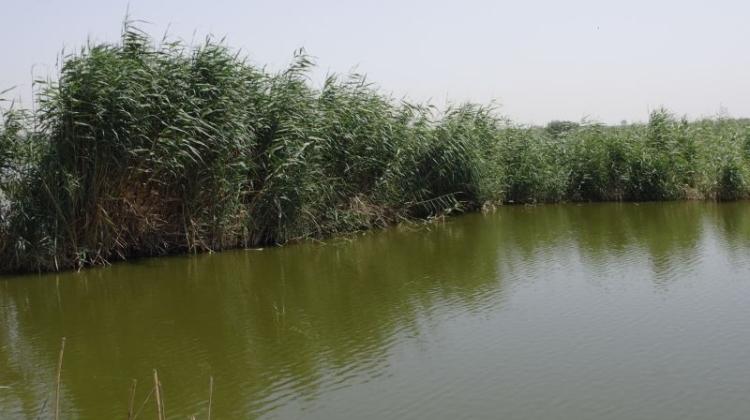Poles have solved the riddle of defensive structures of the Middle Nile

Almost one hundred monumental defensive structures built between the fourth and sixth centuries over approx. 500 km from today\'s south of Egypt to the central Sudan. Polish archaeologists have just discovered some of their functions.
"Archaeological landscape of Egypt is dominated by the pyramids, and Sudan - by stone defensive structures from the time just before - and just after the Christianisation of pagan kingdoms in the mid-sixth century. They are literally all over the whole valley of the Middle Nile" - said in an interview with PAP head of Nubiology, Institute of Mediterranean and Oriental Cultures PAS, Prof. Bogdan Żurawski.
Some of the ramparts were several meters high and several meters wide. Depending on the place, they were made of stones or mud bricks, sometimes combining both techniques. All blocks were bonded with mud mortar. Walls covered an area of several hectares. "The scale is unbelievable" - said Prof. Żurawski.
As part of the subsidy granted by the Foundation for Polish Science in the MASTER programme Prof. Żurawski with a two-member team deals with this issue in the context of the formation of the Christian kingdoms in the valley of the Middle Nile in the IV-VI centuries. "After last research season, we are certain that the majority of the fortresses our team studied originally served as refuges, which means that in times of unrest local population would find refuge behind the huge walls and wait out the danger" - said Prof. Żurawski. He added that in times of peace, people lived in villages along the Nile, close to the fields.
Breakthrough was the research in Selib, a rectangular walled structure with a church and a well in the middle. The work is carried out on the basis of a concession granted to the Polish Centre of Mediterranean Archaeology of the University of Warsaw. Until now the function of this place was not clear. The surrounding wall did not have corner towers, and was relatively thin, so the scientists doubted its defensive functions. This year\'s survey dispelled those doubts. Researchers discovered sixteen bands of stone stairs leading to the top of the wall, and gained confidence that the structure had a practical purpose. An easy way to climb to the top of the wall was needed to take defensive action. The wall itself turned out to be much higher than previously thought.
That is not all. In several fortresses researchers also found traces of trebuchets, ballistic devices that tossed stones at distances up to 100 m.
According to the scientist, the lack of homes points to the refugial function of these structures. The only brick building was usually the church. "In the medieval mentality the church was the best machinery of defence: it offered a divine protection. episodes of the siege of Constantinople by the Arabs, known from descriptions of the chroniclers, testify to the wonderful role of Divine Providence in the defence of the walls" - said Prof. Żurawski. In one case, the church functioned in an abandoned fortress until the 17th century.
Nubian refuges did not have permanent crews. They were defended by the people who protected themselves from danger in there. The local population sought shelter from the incursions of the Bedouin tribes, who arrived from the desert areas.
"The 4th century was the time of the collapse of the Kingdom of Meroë, the collapse of the central government, regional divisions. All this in addition meant that the danger was real, and the borders - unguarded" - said Prof. Żurawski.
Defensive structures were built 20-30 km apart. Between them were observation towers that allowed early detection of impending danger.
Researchers plan to continue excavations within a few defensive structures. Over the next two years, the expect to return to the field several times, to further understand the mysteries of the "Sudanese pyramids".
PAP - Science and Scholarship in Poland, Szymon Zdziebłowski
szz/ zan/
tr. RL
Przed dodaniem komentarza prosimy o zapoznanie z Regulaminem forum serwisu Nauka w Polsce.
















